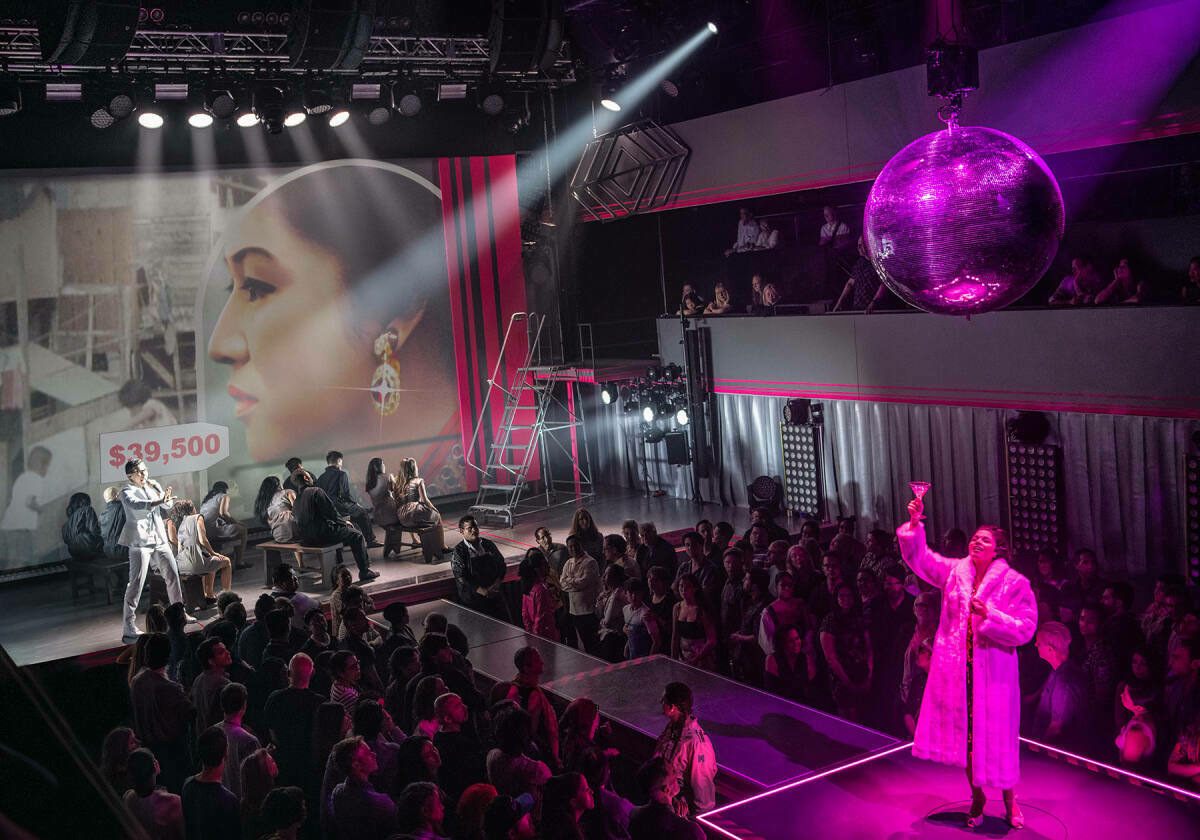A decade after its debut at The Public Theater’s LuEsther Hall off-Broadway in New York City, David Byrne’s Here Lies Love is back in the Big Apple and is the first Broadway event to feature L-Acoustics’s L-ISA immersive technology. Sound designer Cody Spencer spoke to Headliner about collaborating with the Talking Heads icon on the show, and how his work with L-ISA is changing the landscape for immersive theatre as we know it…
Created by Byrne and featuring music from Norman Cook, aka Fatboy Slim, Here Lies Love is a musical that tells the story of Filipino politician Imelda Marcos, from her rise to prominence to her eventual downfall in the Philippines. Instead of laying out on a stage before the audience, the theatre is essentially rendered a bona fide disco, with the main floor space serving as a dancefloor, with actors and audience members mingling as the story is told through music and karaoke. Achieved using more than 220 L-Acoustics loudspeakers supplied by certified partner PRG, and making extensive use of L-ISA technology, the resulting extravaganza places its audience right at the heart of the drama. Those who prefer to sit can do so via various galleries and mezzanine seating areas.
“David Byrne read long ago about Imelda Marcos and how she was in love with disco, and it was such a big part of her life, so when he came up with this idea, he wanted the audience to feel like they were at a disco, not just watching a show,” Spencer tells Headliner. “So, the main floor is a dancefloor where the audience and the actors interact, while there are also mezzanines and galleries looking down. The show is 90 minutes long and is told through karaoke and disco music, telling the story of the Marcos family.
“In my role I am a co-designer with M.L. Dogg, and typically I deal with the sound system, the cast, the mics, and he is the content person, dealing with the sound effects and playbacks,” he continues. “And this is such a massive show, with lots of playback and a lot of sound effects and layers and textures. The system we designed is very complex; it has to be in order to accomplish everything we want to accomplish. This is not a traditional show, it’s much more complicated with the audience and the actors all in the same place. Anywhere there could be an audience member there could be an actor, and anywhere there could be an actor there could be an audience member. It’s a very difficult system to put together and tune and make work without massive feedback. This design has to cover the actors and audience all at the same time, but we’ve figured it out and have a great sounding show that is replicated night after night.”
So how did Spencer and Dogg set about bringing the concept of the show to life?
“It all started with Soundvision, which is L-Acoustics’ proprietary prediction software,” Spencer explains. “So, I spent months making sure every single speaker was covering exactly where I needed it and nowhere else. We did that for months before we got to the theatre, and when we got to the theatre, we realised that things had moved, and lights were in the way. So we spent a lot of time being really precise on what every speaker is doing and knowing that every speaker has a purpose. There is no bleed from one speaker to another. That was the first step, so we knew exactly what the system was doing.
“The hard part of the show is when you’re down on the floor and the action is happening all around you, so how do you know where to look? The first part is making sure the audience knows where to look. And we need to make sure the actors can hear the other actors amongst the audience, so there is a lot of playing with acoustics to make sure the audience is receiving what it needs, and the actors have to hear each other, so there are a lot of little monitors hidden around the set to push vocals to the different areas for the cast. I’ve never tuned a system so much in my life.
“With this setup there are six different zones – the dancefloor, VIP area, front mezz, rear mezz, the galleries on the side and the mix position. So if we make a change to one we have to verify that all the other five don’t have any issues as a result.”


